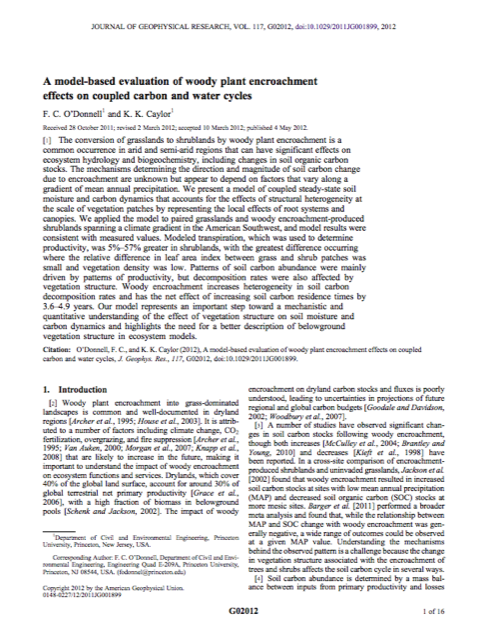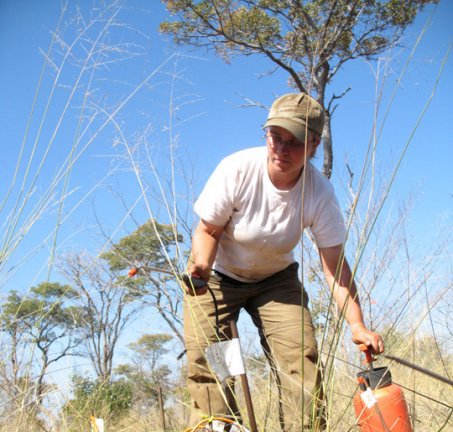A model-based evaluation of woody plant encroachment effects on coupled carbon and water cycles

*O’Donnell, F.C., Caylor, K.K., (2012) “A model-based evaluation of woody plant encroachment effects on coupled carbon and water cycles”, Journal of Geophysical Research – Biogeosciences, doi: 10.1029/2011JG001899.
The conversion of grasslands to shrublands by woody plant encroachment is a common occurrence in arid and semi-arid regions that can have significant effects on ecosystem hydrology and biogeochemistry, including changes in soil organic carbon stocks. The mechanisms determining the direction and magnitude of soil carbon change due to encroachment are unknown but appear to depend on factors that vary along a gradient of mean annual precipitation. We present a model of coupled steady-state soil moisture and carbon dynamics that accounts for the effects of structural heterogeneity at the scale of vegetation patches by representing the local effects of root systems and canopies. We applied the model to paired grasslands and woody encroachment-produced shrublands spanning a climate gradient in the American Southwest, and model results were consistent with measured values. Modeled transpiration, which was used to determine productivity, was 5%–57% greater in shrublands, with the greatest difference occurring where the relative difference in leaf area index between grass and shrub patches was small and vegetation density was low. Patterns of soil carbon abundance were mainly driven by patterns of productivity, but decomposition rates were also affected by vegetation structure. Woody encroachment increases heterogeneity in soil carbon decomposition rates and has the net effect of increasing soil carbon residence times by 3.6–4.9 years. Our model represents an important step toward a mechanistic and quantitative understanding of the effect of vegetation structure on soil moisture and carbon dynamics and highlights the need for a better description of belowground vegetation structure in ecosystem models.
